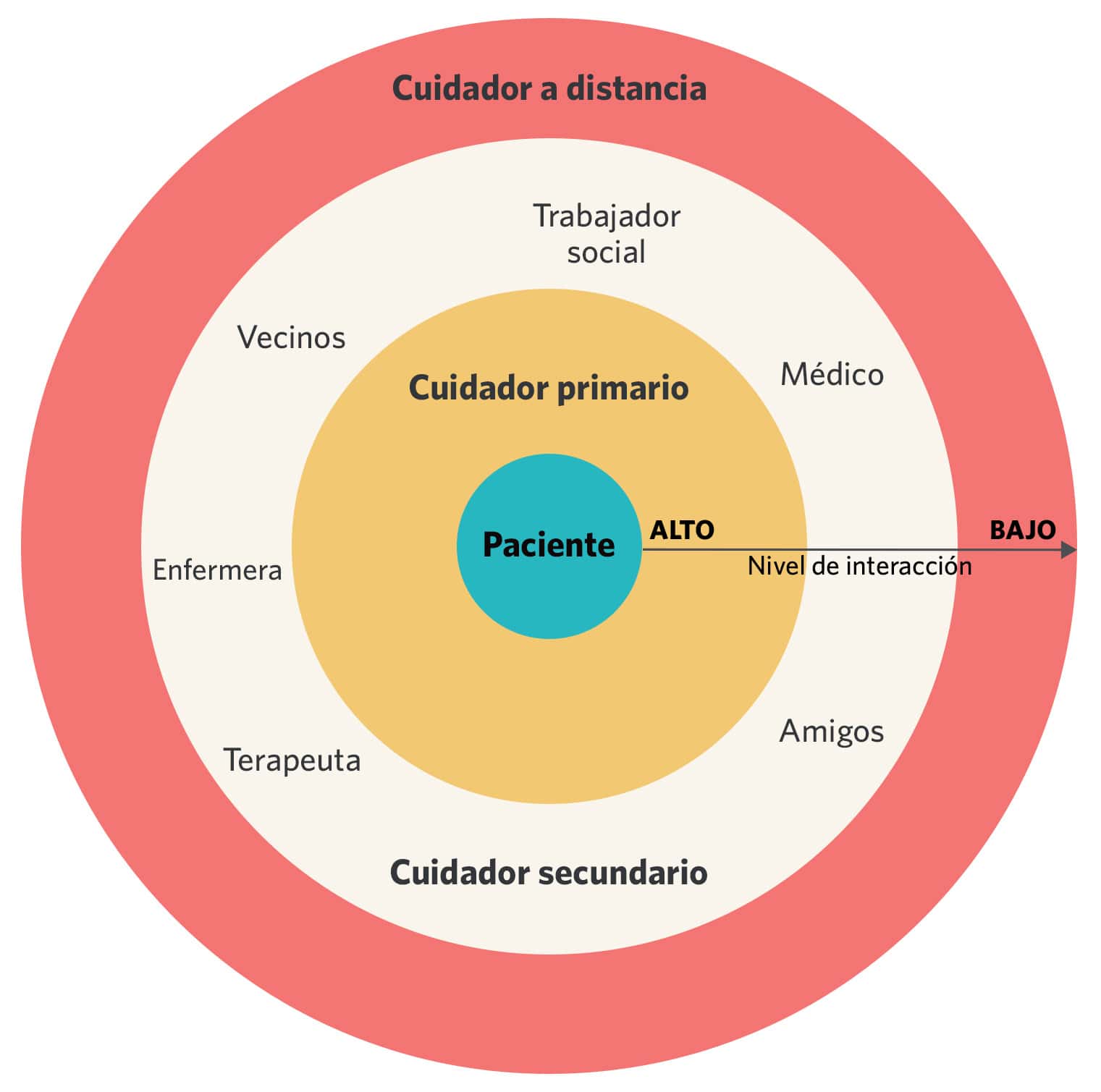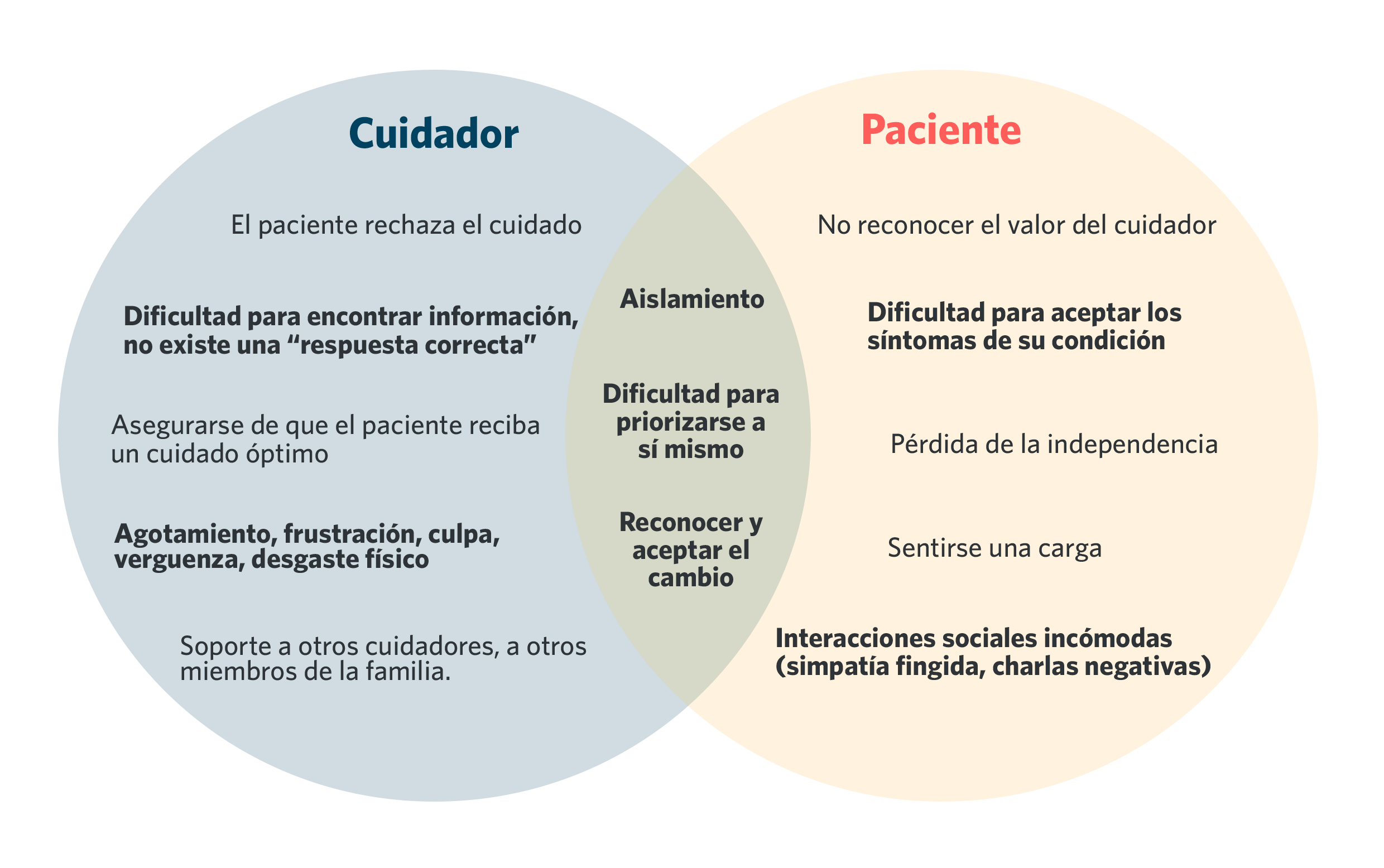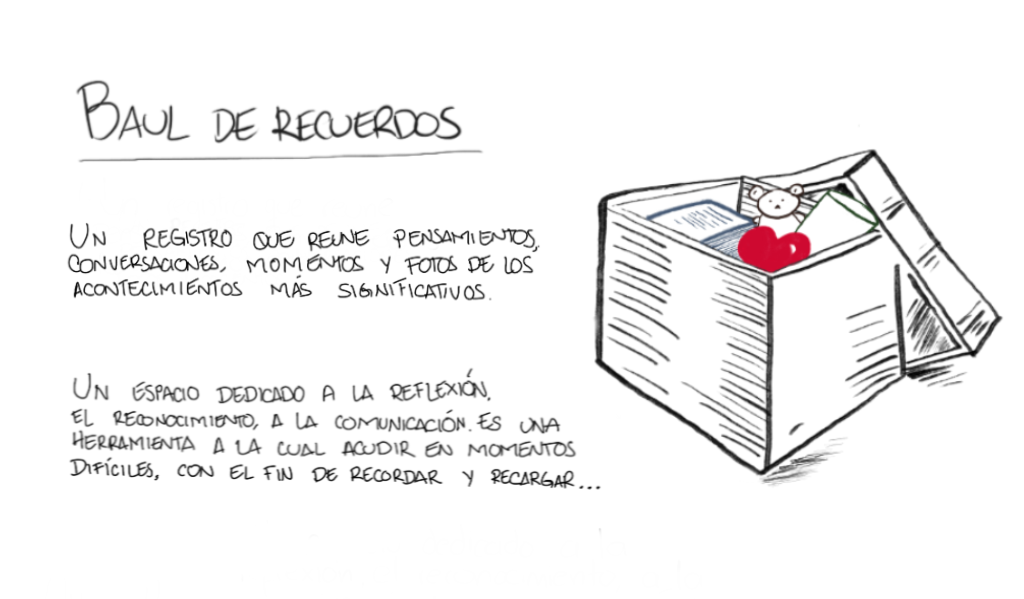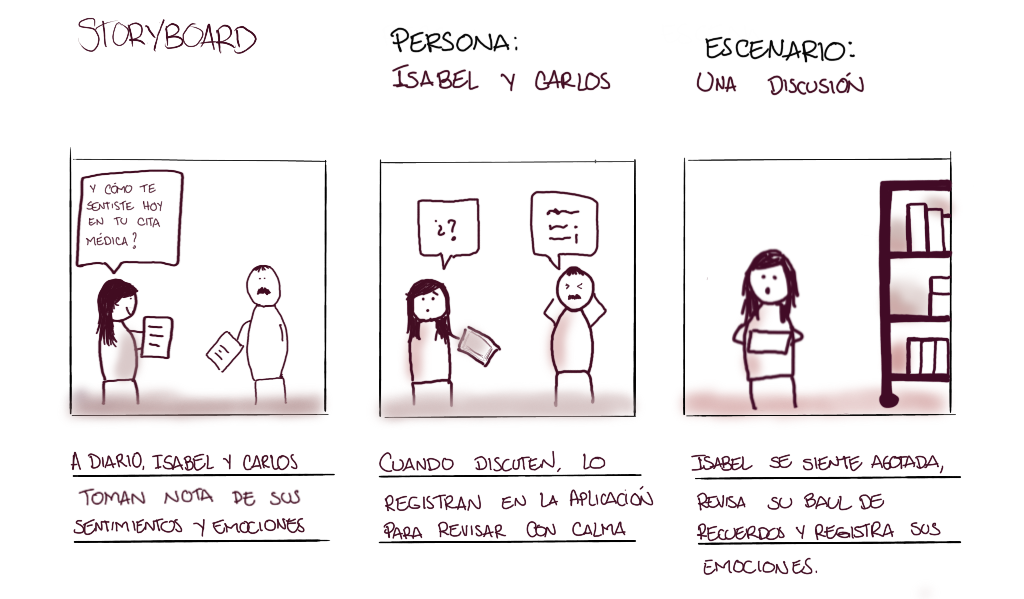
Design for healthcare
Amicui
Digital platform for caregivers
Amicui is a digital platform for caregivers and care recipients to connect among themselves and with
each other in meaningful ways.
Having myself cared for a cousin with Down syndrome, I knew the challenges that caregivers face.
I volunteered at a senior center, and I visited 3 different nursing homes where I spoke with professionals, and other caregivers. From these experiences, I noticed some challenges which I committed to address through design.
Project type: Individual.
My role: I was responsible for the research, interaction design, visual design, and branding.
Duration: 3 months.

Image caption
The challenge
Problem statement: Address caregiver burnout and support both caregivers and care recipients in their emotional health and relationships.
The world of caregiving: In Colombia, there are over 2.6 million people with disabilities. The average caregiver spends at least 20 hours a week providing care while balancing other aspects of their lives. However, their role is often overlooked in our society.
Caregiver refers to anyone who provides care for a person who needs extra help. Usually, caregivers are forced to balance their time between work and care, not only for the care receiver but also for their children or spouse. For this reason, in many cases, care is related to a deterioration in the mental and physical health of caregivers.
Key relationships Radial Map
The approach
I began by understanding how the system of in-home caregiving works and who is involved.
Because different caregivers have different levels of involvement for the care, each type of caregiver has different concerns; thus, I mapped out the roles and relationships to better understand the interactions between each role.
Also, I listed out all the potential duties a caregiver may have. From my conversations at one of the nursing homes, I learned that each role exists as a profession, yet it’s not uncommon for family caregivers to be juggling all of them at once!
From speaking to caregivers and care recipients, I learned their unique problems as well as their shared problems. In this overlapping space of shared problems, I created two categories to further highlight the specific issues: personal and interpersonal.

Elderly care mind map
The discovery
As I was interviewing all the different stakeholders, I came up with the following opportunity statements:
How might we help caregivers and care recipients…
… acknowledge their current situation?
… recognize and accept changes?
… identify and articulate their feelings and needs?
With these questions in mind, I started designing!
The goal
My goal was to learn more about seniors, caregivers, nursing homes, and other healthcare established systems. I discovered the tremendous potential and need to create something valuable and meaningful.
Many elderly people would much rather live on their own than to be in a care home. I saw an opportunity to support and empower them without isolation from assistance and social interaction. For this project I aimed to explore, understand, and propose, using technology and design as a solution.
The framework
I structured my prototyping and iterating process into three phases, each one guided by specific research questions:
1. Concept Validation
What value do people see in these ideas? I began by sketching out two ideas: a box of memories and a memory assistant.
Box of memories. Idea sketch and storyboard.
Memory assistant. Idea sketch and storyboard.
For this first phase, I wanted to know if people would actually find value in these ideas, and why. Therefore, I user-tested these concepts with 9 people, and my key findings are below:
Test results. 7/9 testers found value in the box of memory, and 8/9 testers found value in the assitant.
From this feedback, I decided to move forward with a digital app – a caregiving connection platform with 3 main functions:
- Reflection
Daily checkups – The idea came from an exercise I witnessed at one of the nursing homes called “Two Minute Morning”. The activity consisted of three questions, and the goal was to nurture gratitude, awareness, and focus, which has been shown to improve emotional well-being.
Positive Affirmations – Many of the caregivers I spoke to experienced guilt, shame, and inadequacy with themselves and their abilities. These statements would serve as reminders and encouragement for their hard work.
Time Capsules – According to my observations, I noticed that people really value the positive emotional impact of being able to store and retrieve memories. - Chats
Like a “Messenger for caregiving”, people could create or join communities to keep connected and updated with each other. - Social feed
A space to share moments, thoughts, experiences, and resources with everyone in a community.
2. Low and mid-fidelity prototyping
Is the interface usable? For this phase, I wanted to make sure the interface and functions were clear and intuitive to use, and that people still saw value after experiencing the flows first hand. I conducted 12 user tests with caregivers and care recipients, and used my learnings to guide my iterations:
- Daily check-ins and affirmations were fundamental, they could lower guilt and shame.
- (I had to distinguish the functionality between daily check-ins and combine the two flows for a smoother experience)
- Time capsules would help people see and accept the progression of their loved ones and their situation.
- People appreciated that different chat topics were focused and lightweight, unlike online forums.
- People valued that they could find and connect with others in a similar situation.
- Social feed resources – people found the feed redundant but saw value in the resources aspect of the feed, so I decided to dedicate this section solely to resources.
- Resource flow – I reduced the number of choices for interests to create a smoother flow. Also added “who are you caring for?” question – every relationship dynamic is different (e.g. caring for a parent v.s. a spouse v.s. a sibling)
- People wanted transparency, especially because seniors are frequently targeted for scams – where are these resources from? I added a hover feature for the articles that provide details of the source.
IMAGENES!
3. High fidelity prototyping + branding
Do the flows make sense? For this phase, I tested with 5 participants to move toward my final version. Alongside iterating the features and flows, I worked on branding and visual design.
Dashboard
One of the biggest changes I made was creating a dashboard. Previously, the starting screen was the Reflection section – ideally, I wanted to give the users a place to step back from all the chaos and see their situation and feelings from a broader perspective. However, I received this valuable feedback from one of my testers:


Isabel, caregiver for her husband.
“Don’t assume what people want to be doing first, don’t put any hurdles in their way”
“I don’t want a hallway with a lot of doors, I want to be in a lobby with all the doors open”
Caregivers, especially those under extreme stress, may not want to reflect as their first action. In fact, their stress levels can worsen if they can’t access the information they need the most. Sometimes the first thing a user needs may be communication (“who’s taking her to the next doctor’s appointment?”), or a specific resource (“Can my father travel for more than five hours straight?”). People want to get what is needed in a task-oriented manner, as easily and quickly as possible without distractions or barriers.
Isabel gave me that wonderful metaphor of navigating a building and suggested a dashboard screen with all options available at once. I thought this was a great idea and created this simple screen, which users will see when they access the platform:
Final dashboard design. New starting screen with all options available at once.
I also created, tested, and iterated two new flows:
- Reflection demo
To make sure the Reflection section was easy to understand, I chose to use a guided demo for people to discover it as they explore the platform for the first time. For iterations, I made some visual adjustments to increase readability.
- Take a Break
This is a small feature that I implemented towards the end of the project. Throughout my conversations with caregivers, one common theme that emerged was the importance of humor in life. No matter how difficult things are, being able to not take things so seriously all the time is crucial to emotional well-being. Some participants in my research said:

Carlos, a diabetic patient.
“You need to be able to laugh at yourself, life is too short”

Mayra, caregiver for her mother.
“I think that’s brilliant! I can take a break, catch a breath.
I need to escape for a second, stop thinking about my situation.“
When a user clicks the “Take a break” button, it will give them funny, cute, and/or lighthearted content. From testing and feedback, people loved this feature. One participant told me, “I think that’s brilliant! I can take a break, catch a breath. I need to escape for a second, stop thinking about my situation.” At the beginning I had this feature inside the resources section, but my testers wanted it on every section of the platform! I decided to include it in the side navigation, so it is accessible while unobtrusive.
The solution
Over the course of iterating, I adjusted the colors, contrast, and increased the font size. My goal was to make the interface more accessible, especially for those with poorer vision, lower-tech literacy, and higher stress levels.
For the product name, I decided on “Amicui” – a combination of:
“Ami” – Amigo (Friend in Spanish)
“cui” – Cuidador (Caregiver in Spanish)
Style guide
The gallery below shows the final platform design. I also created illustrations for certain moments of use, to add delight and warmth for the user.
Reflections
This has been one of the most meaningful projects I’ve worked on. Caregiving is a world that I previously had little knowledge of, and discovered to be very rich. Having myself cared for a cousin with Down syndrome, I already had the desire, motivation, and reason to work on this kind of project. That, in addition to the stories I’ve heard and the people I’ve met, were truly inspiring, and I am extremely thankful to have had the chance to learn from them. I would love to continue working in healthcare design.













